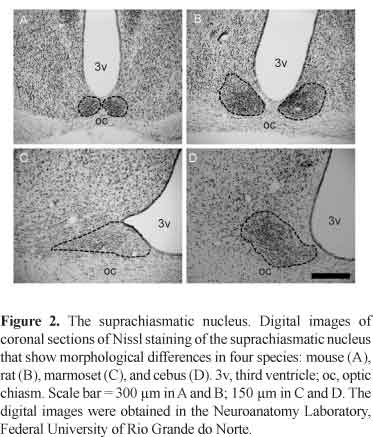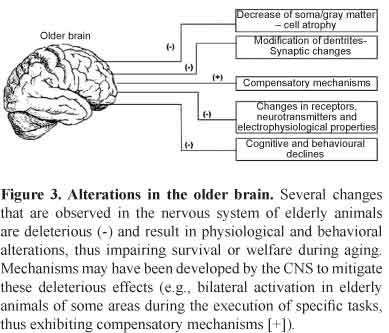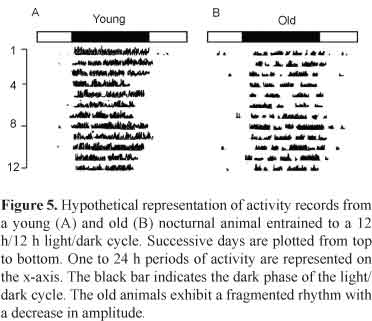Animals have neural structures that allow them to anticipate environmental changes and then regulate physiological and behavioral functions in response to these alterations. The suprachiasmatic nucleus of the hypothalamus (SCN) is the main circadian pacemaker in many mammalian species. This structure synchronizes the biological rhythm based on photic information that is transmitted to the SCN through the retinohypothalamic tract. The aging process changes the structural complexity of the nervous system, from individual nerve cells to global changes, including the atrophy of total gray matter. Aged animals show internal time disruptions caused by morphological and neurochemical changes in SCN components. The effects of aging on circadian rhythm range from effects on simple physiological functions to effects on complex cognitive performance, including many psychiatric disorders that influence the well-being of the elderly. In this review, we summarize the effects of aging on morphological, neurochemical, and circadian rhythmic functions coordinated by the main circadian pacemaker, the SCN.
suprachiasmatic nucleus; aging; morphological and neurochemical changes; circadian rhythms





